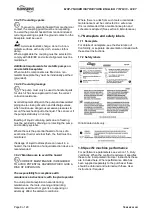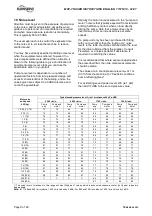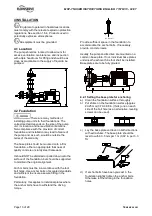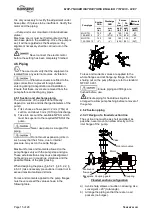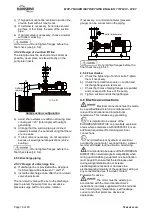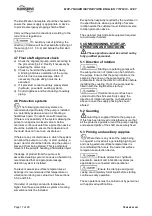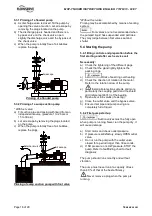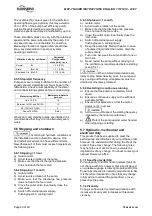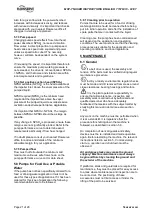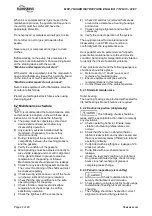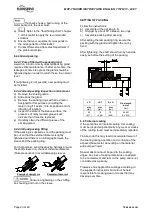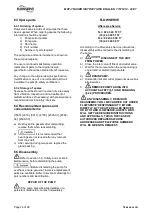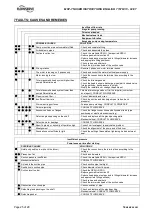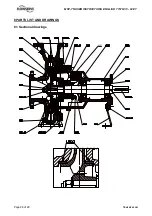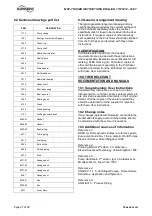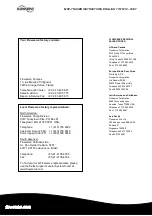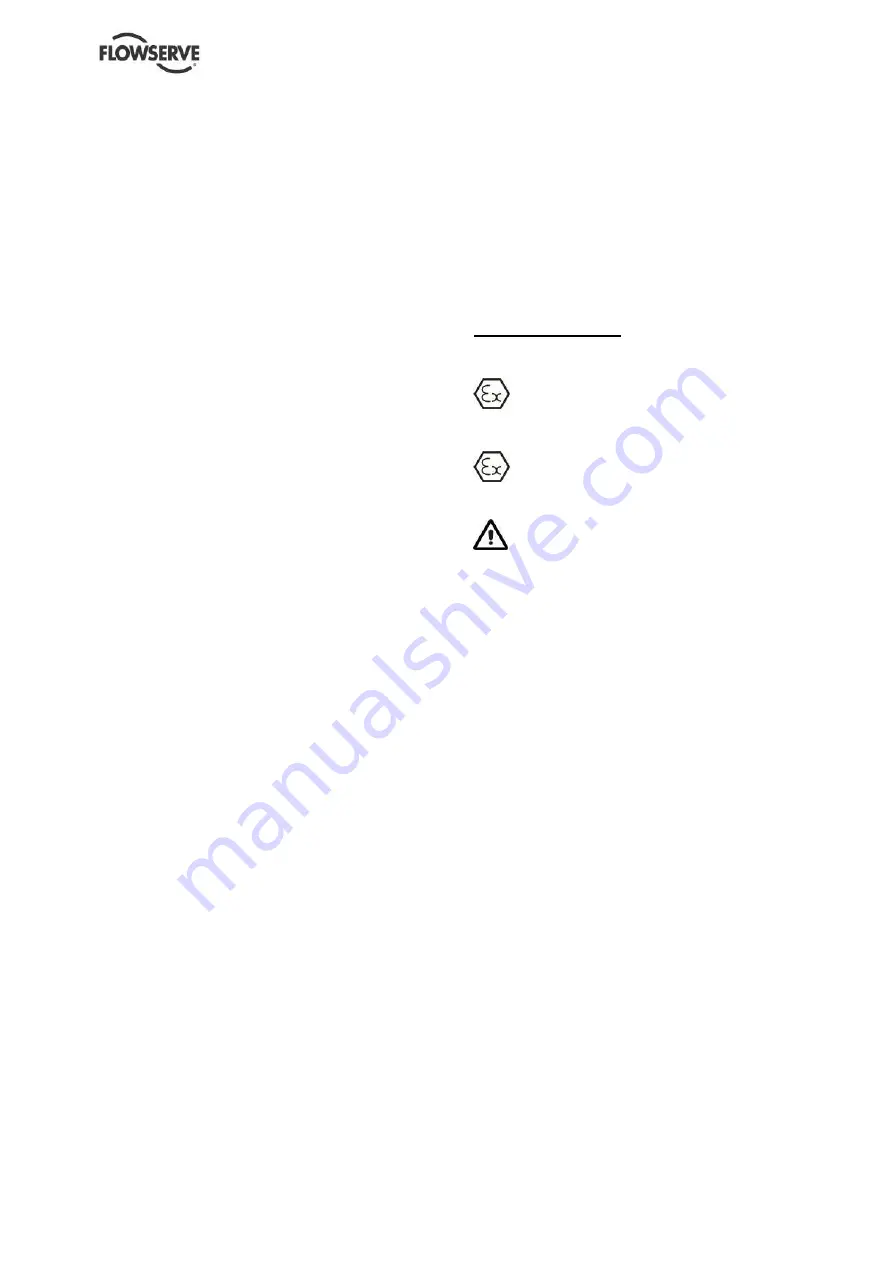
MHP-TN USER INSTRUCTIONS ENGLISH 71576313 - 02/07
Page 21 of 28
flowserve.com
Also for a given flow rate the power absorbed
increases with increased viscosity, and reduces
with reduced viscosity. It is important that checks
are made with your nearest Flowserve office if
changes in viscosity are planned.
5.7.3 Pump speed
Changing pump speed effects flow, total head,
power absorbed, NPSH
R
, noise and vibration.
Flow varies in direct proportion to pump speed,
head varies as speed ratio squared and power
varies as speed ratio cubed. The new duty,
however, will also be dependent on the system
curve.
If increasing the speed, it is important therefore to
ensure the maximum pump working pressure is
not exceeded, the driver is not overloaded, NPSH
A
> NPSH
R
, and that noise and vibration are within
local requirements and regulations.
5.7.4 Net positive suction head (NPSH
A
)
NPSH available (NPSH
A
) is the head available at
the impeller inlet, above the vapor pressure of the
pumped liquid.
NPSH required (NPSH
R
) is the minimum head
required at the impeller inlet, above the vapor
pressure of the pumped liquid, to avoid excessive
cavitation and extreme performance degradation.
It is important that NPSH
A
> NPSH
R
. The margin
between NPSH
A
> NPSH
R
should be as large as
possible.
If any change in NPSH
A
is proposed, ensure these
margins are not significantly eroded. Refer to the
pump performance curve to determine exact
requirements particularly if flow has changed.
If in doubt please consult your nearest Flowserve
office for advice and details of the minimum
allowable margin for your application.
5.7.5 Pumped flow
Flow must not fall outside the minimum and
maximum continuous safe flow shown on the
pump performance curve and or data sheet.
5.8 Pumps for Food Use or Potable
Water
If the pump has not been specifically ordered for a
food or drinking water application it must not be
used for these types of applications. If it has been
ordered for this type of application the following
recommendations are to be followed.
5.8.1 Cleaning prior to operation
Pumps that are to be used for a food or drinking
water application should be cleaned before being
put into initial operation and after the installation of
spare parts that are in contact with the liquid.
Cleaning once the pump has been commissioned
will depend on the application and operating
conditions. The user must ensure that the cleaning
procedures are suitable for the application and
operating conditions, and local regulations.
6 MAINTENANCE
6.1 General
If a belt drive is used, the assembly and
tension of the belts must be verified during regular
maintenance procedure.
In dirty or dusty environments, regular checks
must be made and dirt removed from areas around
close clearances, bearing housings and motors.
It is the plant operator's responsibility to
ensure that all maintenance, inspection and
assembly work is carried out by authorized and
qualified personnel who have adequately
familiarized themselves with the subject matter by
studying this manual in detail (see also section
1.6.2).
Any work on the machine must be performed when
it is at a standstill. It is imperative that the
procedure for shutting down the machine is
followed, as described in section 5.6.
On completion of work all guards and safety
devices must be re-installed and made operative
again. Before restarting the machine, the relevant
instructions listed in section 5,
Commissioning,
start up, operation and shut down
must be
observed.
Oil and grease leaks may make the ground
slippery. Machine maintenance must always
begin and finish by cleaning the ground and
the exterior of the machine.
If platforms, stairs and guardrails are required for
maintenance, they must be placed for easy access
to areas where maintenance and inspection are to
be carried out. The positioning of these
accessories must not limit access or hinder the
lifting of the part to be serviced.


